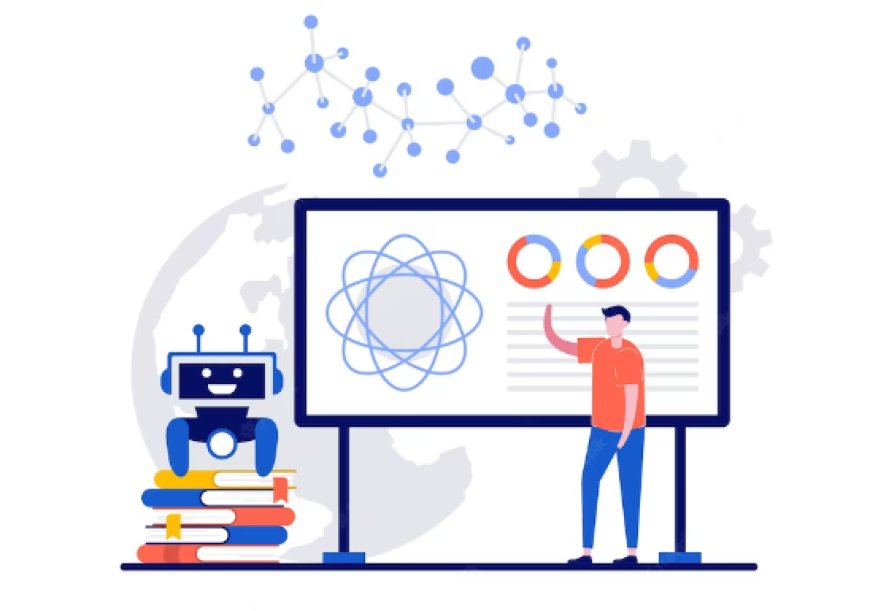The Role of Perspective in Machine Learning
Explore machine learning, perspectives, algorithms, data, models, bias, training, insights, applications, technology, innovation.

In the realm of machine learning, the ability to gain a new perspective is crucial. Perspective is not limited to a human viewpoint; it extends to the way algorithms interpret data, make decisions, and evolve. Just as a new perspective can lead to fresh insights for humans, it can also unlock novel solutions and advancements in machine learning. In this blog post, we will explore the significance of perspective in machine learning and its implications for various applications.
1. Feature Engineering and Data Representation:
Feature engineering and data representation are crucial steps in the machine learning and data analysis process. Feature engineering involves creating new features or transforming existing features to improve the performance of a machine learning model. It aims to extract relevant information from raw data and present it in a more meaningful way.
Feature engineering starts with a deep understanding of the problem domain and the available data. It involves selecting and combining features that are most relevant to the task at hand. This may include creating new features based on domain knowledge or using mathematical transformations to extract more informative patterns from the data.
Data representation, on the other hand, focuses on how the data is structured and encoded for analysis. It involves converting raw data into a format that can be easily understood and processed by machine learning algorithms. The choice of data representation depends on the nature of the data and the specific problem being addressed.
Common techniques for data representation include one-hot encoding, where categorical variables are transformed into binary vectors, and numerical scaling, where numerical features are normalized to a common scale to prevent bias. Other methods include text tokenization and vectorization, image preprocessing, and time series feature extraction.
Effective feature engineering and data representation can greatly impact the performance of machine learning models. Well-engineered features can capture important patterns and relationships in the data, leading to more accurate predictions and better insights. Choosing an appropriate data representation ensures that the data is in a format that the model can effectively learn from.
However, feature engineering and data representation require careful consideration and domain expertise. It is important to strike a balance between creating complex features that may overfit the model and simplifying the data representation to avoid losing important information. Iterative experimentation and evaluation are often needed to fine-tune the feature engineering and data representation process.
2. Bias and Ethical Considerations:
Bias and ethical considerations play a crucial role in the development and deployment of machine learning models and data analysis. Bias refers to the systematic and unfair favoritism or discrimination towards certain groups or individuals. It can arise from various sources, including biased training data, biased feature engineering, or biased decision-making processes.
Addressing bias requires a thorough understanding of the data and the potential sources of bias. It is essential to carefully examine the training data for any imbalances or underrepresentation of certain groups. Biased data can lead to biased predictions or reinforce existing societal biases. Mitigating bias may involve techniques such as data augmentation, data balancing, or algorithmic fairness measures to ensure equal treatment and representation for all individuals or groups.
Ethical considerations go beyond bias and involve the broader impact of machine learning models on individuals, society, and privacy. It is important to consider the potential consequences and risks associated with using and deploying these models. Questions of fairness, accountability, transparency, and privacy should be addressed throughout the entire machine learning pipeline.
Transparency is vital, as it allows users to understand how decisions are made and identify any potential biases or discriminatory practices. Model interpretability techniques can provide insights into the decision-making process of complex models, promoting trust and accountability.
Furthermore, data privacy and protection should be safeguarded throughout the data collection, storage, and analysis processes. Sensitive information should be handled with care and in compliance with relevant regulations and ethical guidelines.
Ethical considerations also extend to the potential societal impacts of machine learning models. It is crucial to consider the broader implications, such as the potential for exacerbating existing inequalities or the unintended consequences of automated decision-making. Engaging in interdisciplinary collaborations and involving diverse perspectives can help identify and address potential ethical concerns.
3. Interpretable and Explainable Models:
Perspective is key to developing interpretable and explainable machine learning models. As models become increasingly complex, it becomes more challenging to understand their decision-making processes. By incorporating interpretability techniques and considering multiple perspectives, we can shed light on the "black box" nature of certain models. Perspectives from explainability research, visualization techniques, and human-computer interaction can provide insights into the inner workings of models, enabling us to trust and use them effectively.
4. Transfer Learning and Generalization:
Perspective expands the boundaries of machine learning through transfer learning and generalization. Transfer learning allows models to leverage knowledge gained from one task to improve performance on another. By learning from diverse perspectives and domains, models can extract valuable insights and adapt them to new situations. Generalization, on the other hand, enables models to apply learned knowledge to unseen data. By considering various perspectives during training, models can generalize better, making accurate predictions on new and unfamiliar examples.
5. Human-Machine Collaboration:
Human-machine collaboration in machine learning refers to the partnership and interaction between humans and machines to achieve optimal results in data analysis and decision-making tasks. It recognizes that both humans and machines possess unique capabilities and expertise that, when combined, can lead to more accurate and insightful outcomes.
In the context of machine learning, human input and expertise are invaluable throughout the entire pipeline, from data preprocessing to model development and evaluation. Human involvement starts with data collection and annotation, where humans play a critical role in ensuring the quality and accuracy of the labeled data. They provide domain knowledge and context that machines may lack, helping to identify relevant features and patterns.
During the model development phase, humans contribute by selecting appropriate algorithms, designing the model architecture, and setting hyperparameters. They also play a key role in validating and interpreting the results, understanding the limitations of the models, and refining them based on their insights and domain expertise.
Human-machine collaboration extends beyond the model development stage. It continues during the deployment and monitoring of machine learning systems. Humans provide ongoing evaluation and feedback to ensure that the models are performing as intended and address any potential biases or errors that may arise. They also handle exceptions and edge cases that the models may struggle with, improving the overall system performance and reliability.
Effective human-machine collaboration requires effective communication and understanding between humans and machines. It involves building interfaces and tools that facilitate seamless interaction and knowledge exchange. Interpretability techniques can help humans understand the decision-making process of complex models, enabling them to trust and validate the outcomes.
Perspective is a fundamental aspect of machine learning that empowers us to achieve new breakthroughs and address complex problems. By embracing multiple perspectives throughout the machine learning lifecycle, from data representation to model interpretation, we can enhance the fairness, interpretability, and generalizability of algorithms. Moreover, collaboration between humans and machines, incorporating diverse viewpoints, leads to more comprehensive and innovative solutions. As we continue to explore the frontiers of machine learning, let us remember the power of perspective in shaping the future of AI and its positive impact on society.





































